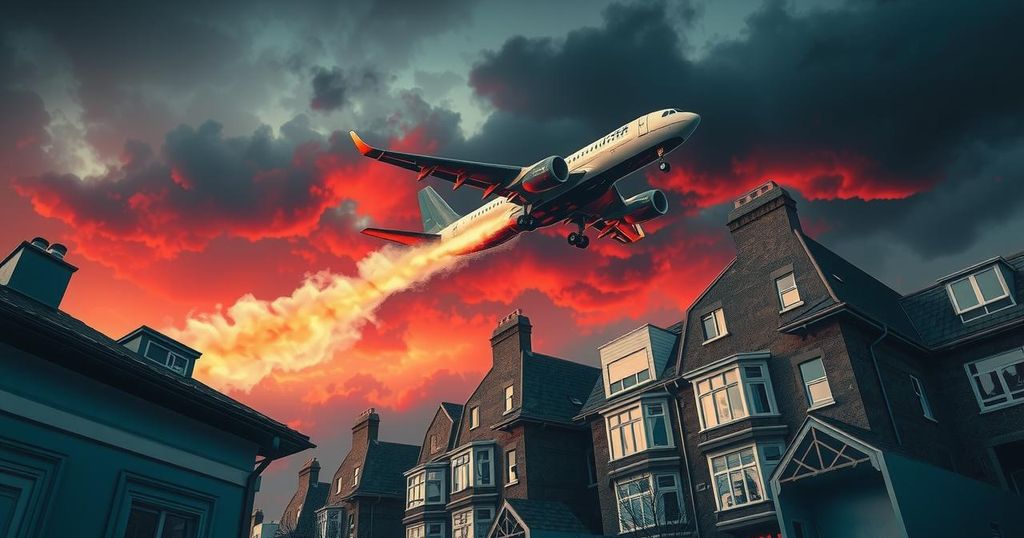Air India Flight AI-171 Crash: Timeline of the Tragedy
On Thursday, Air India Flight AI-171 crashed shortly after departure from Ahmedabad, killing many and igniting a fire in a hospital complex. The aircraft took off at 1:38 PM and faced a full emergency moments later. Investigators are exploring several potential causes, including engine failure, contaminated fuel, and maintenance issues as they seek to determine what led to this tragic event.
On Thursday, Air India Flight AI-171 tragically crashed into the residential quarters of BJ Medical College shortly after taking off from Ahmedabad, resulting in numerous fatalities. The flight was en route to London when it went down just 33 seconds post-departure, causing a catastrophic fire within the hospital complex located nearby. Authorities have pieced together the events leading up to the disaster using Flightradar data, eyewitness accounts, and videos shared by onlookers.
According to reports, the timeline of the flight began at 1:30 PM when AI-171 pushed back from the loading bay at Sardar Vallabhbhai Patel International Airport. The aircraft started moving toward the active runway at around 1:31 PM. By 1:34 PM, after being cleared by Air Traffic Services, the airplane lined up on Runway 28, preparing for takeoff. At 1:38 PM sharp, the Dreamliner took off. Almost immediately, the pilot issued a ‘Mayday’ distress call indicating a full emergency.
Data indicates that at 1:38:55 PM, the aircraft reached an altitude of 625 feet, achieving a maximum speed of 174 knots before entering a rapid descent. Eyewitness footage shows the aircraft making a shallow dive with its nose pitched upward and landing gear extended—a classic signal of emergency maneuvers. Tragically, mere moments later, the plane disappeared from view in the video before crashing, leading to a massive explosion upon impact.
With the investigation now underway, aviation experts suggest several lines of inquiry to piece together the crash’s cause. Investigators will examine data retrieved from the aircraft’s black boxes along with a thorough assessment of crew performance, ground operations, and maintenance records. Crucial questions are emerging, such as whether the aircraft suffered power loss, if both engines experienced failure simultaneously, or if contaminated fuel played a role in the incident.
Moreover, experts are questioning the possibility of foreign object debris, like bird strikes, affecting the flight during takeoff. Additionally, there’s speculation regarding the aircraft’s electrical systems and the unusual configuration: why were the flaps retracted while the landing gear remained extended in those final moments? The focus now turns to maintenance records and whether take-off fuel and weight parameters were within acceptable limits as the investigation unfolds.
The Air India Flight AI-171 disaster, occurring shortly after takeoff from Ahmedabad, has raised critical questions regarding aircraft safety and emergency protocols. As investigators analyze various lines of inquiry, including technical failures and maintenance practices, the aviation community remains on high alert about the regulatory standards that govern flight operations. The tragedy serves as a solemn reminder of the inherent risks of air travel, shaking public confidence in the safety measures currently in place.
Original Source: www.hindustantimes.com




Post Comment